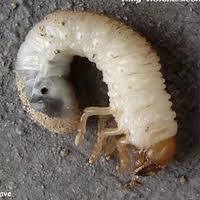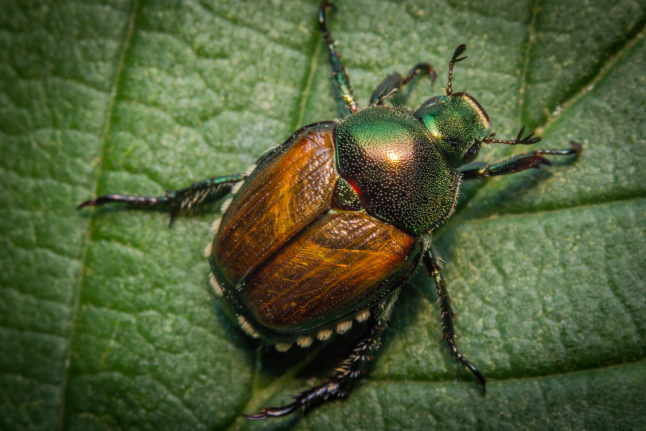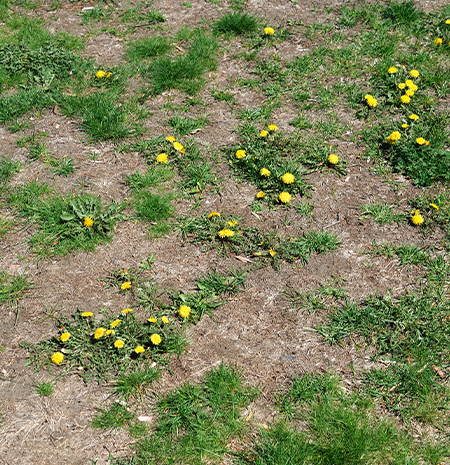Lawn Grubs



Lawn Grubs
Identifying White Grubs
There are many different species of white grubs that can cause damage to turfgrass. The adult forms of these grubs are normally easy to distinguish from one another; however, the larvae are all very similar in appearance. White grubs have creamy-white to gray colored bodies with brown heads and six distinct legs. They usually assume a C-shaped position when in the soil. The easiest way to identify white grub types is to examine the raster pattern. This is a collection of spines, or hairs, found on the underside of the tip of the abdomen. Each grub species has a unique raster pattern.
White Grub Damage
White grub damage often resembles that of drought stress. Watering these areas of your lawn will often mask the injured turf. Early symptoms of white grub infestation include gradual thinning, yellowing and wilting of the turf. Scattered, irregular or dead patches can also occur. Infested turf typically feels spongy underfoot as the turfgrass is not well anchored to the soil due to grubs feeding on the roots. These areas can easily be pulled up by hand to expose the soil surface and the feeding grubs.
To identify grub activity in your lawn, we recommend pulling or cutting back the damaged turf and visually checking for grubs near the soil surface. Animals (skunks, raccoons, moles, etc.) that feed on grubs can also cause damage to the turfgrass when searching for food. These animals may return for up to a year after the grubs are controlled as they remember where they have found food in the past.
Adult forms of White Grubs
Although the different species of white grubs are difficult to differentiate as larvae, their adult forms are easier to distinguish. Essentially, white grubs are simply the larva stage of adult beetles; all species of beetles begin their lives as white grubs.
Below are some of the more common species of beetles:
- Japanese Beetle
- European Chafer
- May June Beetle
- Oriental Beetle
- Masked Chafer
- Asiatic Garden Beetle
- Green June Beetle
- Sugar Cane Grub